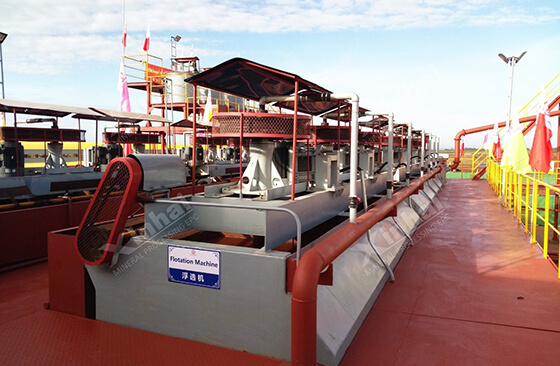
Quartz flotation is one of the common beneficiation methods for quartz purification. Importantly, ignoring the following factors would reduce the quartz flotation efficiency greatly.
There are three factors needed to take into consideration in quartz flotation processing plants. Mechanical is the first factor, such as the type of flotation machine, airflow state, slurry flow state, and tank composition, etc.; the second factor affecting quartz flotation is human operation as feeding speed and temperature, etc.; the third factor is the chemical factor---flotation reagent.

The flotation of quartz is generally carried out in the air inflation flotation machine. The air inflation flotation machine is an external air self-priming flotation machine, which can not only aerate the slurry but also stir it at the same time. And this flotation machine is more suitable for multi-stage flotation and can also achieve good results.
When the particle size of the mineral is too large, the bubbles produced by the flotation agent have a weak ability to carry the mineral particles resulting in the failure of useful minerals to float out. When the particle size of the mineral is too small, the content of the target mineral in the flotation process would be reduced.

There are two reasons for adjusting the flotation temperature: reagent needs a suitable reaction environment and high or low temperature would interfere with the reaction process; the mineral flotation separation needs to be carried out at a suitable temperature. Generally speaking, when the slurry temperature is 40~45℃, the quartz flotation can achieve the best results.

Pure quartz cannot be floated with anionic collectors. But many metal ions can activate quartz, such as calcium, barium, copper, lead, aluminum, and iron ions. For example, finely quartz ground in the ball mill can be floated with a small amount of oleic acid due to activating by iron ions.
The floatability of quartz is related to the pH of the medium. When the amount of oleic acid is equal, the floatability of quartz decreases with the increase of pH. Some cations (such as calcium and magnesium) can only activate the fossil in a strongly alkaline medium, while other cations (such as iron and aluminum) can activate quartz only in a neutral medium. When the collector is excessive, the quartz activated with calcium and magnesium ions would stop flotation, but the quartz activated with iron and aluminum ions has better floatability.

Usually, deionized water and soft water are better, because of hard water containing more minerals (such as Ca2+, Mg2+, Fe3+, etc.) which would destroy or consume some flotation reagents.
For example, water glass strongly inhibits the quartz activated by divalent iron and aluminum. But when the pH is 6, the quartz activated with ferric iron cannot be inhibited by a large dose of water glass; when the pH is 11, the quartz activated by calcium and magnesium is almost not inhibited by the water glass. Sodium sulfide can inhibit quartz activated by trivalent and divalent iron and aluminum but does not inhibit quartz activated by calcium and magnesium ions at all.
In order to ensure the inhibitor's inhibitory effect on quartz, water in quartz flotation must be softened to replace the hard water containing calcium and magnesium.

Flotation continues to be one of the most important methods in quartz processing plant. In the flotation process, the factors mentioned above must be paid attention to achieve good results. Today, it is a well-known fact that the efficient use of flotation machines can lead to major improvements in plant performance.
We at Xinhai, have not only been focusing on developing the one-stop solution for quartz flotation processing plant but also on our capabilities to help customers optimize the operation of their units.
To find out more about our products and solutions, please fill out the form below and one of our experts will get back to you shortly.